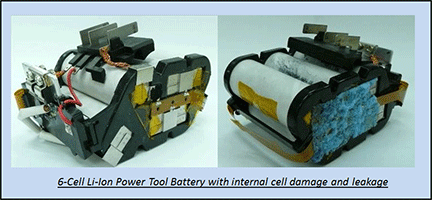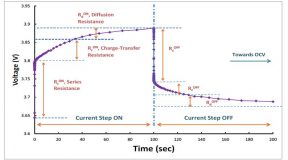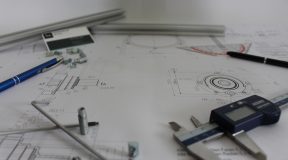Upal Sengupta, Staff Applications Engineer
Texas Instruments, Battery Management Solutions
It may not be the law, but it’s a good idea!
Many of us can still remember when seat-belt laws started becoming the norm a while back. There were advertisements that said, “It’s not just a good idea – it’s the law!” We were reminded that we all should do the right thing and fasten our seat belts every time we get in the car. I feel the same way about cell balancing in a multi-cell, Lithium-Ion (Li-Ion) battery pack. Most customers that I’ve worked with use cell balancing, in many cases because it is already built into the battery fuel gauges and protection ICs that we supply for their smart battery packs.
But as Li-Ion expands out from the traditional “smart” applications like computers and tablets into power tools or other relatively low-cost areas, some feel that the added cost of cell balancing just isn’t worth the effort. Engineers who design equipment that traditionally used NiCd/NiMH or Lead-Acid battery packs never had to worry about cell balancing before. The cells in those systems could tolerate a limited amount of over-discharge and overcharge on each usage cycle. Plus the cells could be (roughly) re-matched to each other with some amount of forced overcharge into the higher cells to let the lower ones catch up.
Now that high-rate Li-Ion cells are available, their higher energy density and light weight make them more attractive for higher power / industrial types of applications. But as we discussed before, “There’s No Free Lunch.” Is it worth adding this circuitry in your multi-cell battery pack? We think so. Mostly because unbalanced cells can lead to total battery pack failure, as shown in these power tool battery pack photos:
Measuring the external terminals of this 6-series Li-Ion battery pack gave a reading of about 20 V, well within the “normal” range for a pack this size. However, the pack could not provide any output power at all. After opening the pack and reading the individual cell voltages, five of the six cells were nearly full, showing just over 4.0 V each. But one cell was not only low, it was actually destroyed. It measured –0.5 V (yes, negative half a volt). Severe (repetitive) over-discharge of the weakest cell led to complete failure, and eventual leakage of the internal materials out of the cell casing as seen in the photo.

Fortunately, there are some simple and relatively low-cost solutions for cell balancing in small and medium-sized battery packs (see references 1 and 2 below). Furthermore, most of TI’s multi-cell fuel gauge devices integrate the cell balancing function automatically (references 3 and 4). In Part 2 of this post, we’ll look closer at why cell balancing is necessary, and some more ways you can implement it in your system.
References
- 2-Cell Pack Protection and Balancing: bq29200 Data Sheet, http://www.ti.com/product/bq29200
- 4-8 Cell Pack Protection and Balancing: bq77908A Data Sheet, http://www.ti.com/product/bq77908a
- Battery Pack Manager with Integrated Balancing: bq3055 Data Sheet, http://www.ti.com/product/bq3055
 Upal Sengupta is a staff applications engineer with the TI Battery Management Solutions group. Since joining TI in 2003, Upal has worked as an applications engineer and technical marketing manager in support of TI’s portable power and battery management technology. Prior to TI, he worked as a system design engineer for OEMs developing mobile phones, portable computers, and consumer products. Upal received a BSEE from the University of Illinois, and an MSEE from Michigan State University. Upal can be reached at ti_upalsengupta@list.ti.com.
Upal Sengupta is a staff applications engineer with the TI Battery Management Solutions group. Since joining TI in 2003, Upal has worked as an applications engineer and technical marketing manager in support of TI’s portable power and battery management technology. Prior to TI, he worked as a system design engineer for OEMs developing mobile phones, portable computers, and consumer products. Upal received a BSEE from the University of Illinois, and an MSEE from Michigan State University. Upal can be reached at ti_upalsengupta@list.ti.com.










